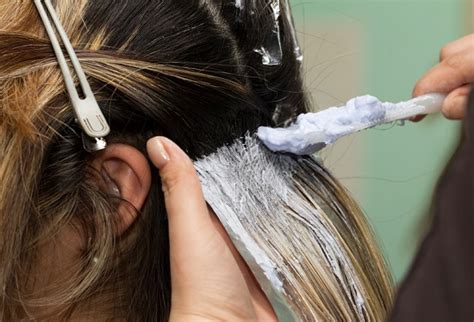Introduction

With countless hair color options available today, achieving your desired shade has never been easier. Whether you’re a seasoned stylist or a home color enthusiast, understanding the principles of hair color application is crucial for successful results. This comprehensive guide will empower you with the knowledge and techniques to create vibrant and long-lasting hair colors.
Understanding Hair Structure
Before embarking on any hair coloring adventure, it’s essential to comprehend the anatomy of your hair. Your hair is composed of three primary layers:
- Cuticle: The outermost layer, consisting of overlapping scales that protect the hair shaft and determine its texture.
- Cortex: The middle layer, containing melanin pigments that determine your natural hair color.
- Medulla: The innermost layer, which is not pigmented and contributes to the structural integrity of the hair.
Types of Hair Color
Hair colors are categorized into three main types:
- Permanent Hair Dye: Penetrates deep into the hair’s cortex and permanently alters the melanin pigments. It requires occasional touch-ups to cover root growth.
- Semi-Permanent Hair Dye: Deposits color onto the hair’s cuticle without altering the natural melanin pigments. It lasts for several weeks and gradually fades with each wash.
- Temporary Hair Dye: Coats the hair’s surface with color pigments that wash out completely after one wash. It’s ideal for experimenting with different shades without commitment.
Choosing the Right Hair Color
Selecting the perfect hair color depends on several factors, including:
- Skin Tone: Warm skin tones complement golden, copper, and red hues, while cool skin tones suit ash, platinum, and violet shades.
- Natural Hair Color: Darker hair requires more bleaching to achieve lighter shades, while lighter hair is more receptive to color absorption.
- Personal Style: Choose a color that aligns with your overall aesthetic and personality.
Hair Color Application Techniques
1. Full-Head Color
- Divide hair into sections and apply color evenly from roots to tips.
- Use a tint brush to distribute color precisely.
- Allow the color to process according to the manufacturer’s instructions.
2. Root Touch-Up
- Apply color only to the roots where new growth has occurred.
- Use a small brush and apply carefully to avoid overlapping.
- Process for a shorter duration than a full-head color.
3. Balayage
- Hand-paint color onto selected sections of hair in a sweeping motion.
- Creates soft, natural-looking highlights or lowlights.
4. Ombre
- Gradually blend different shades of color from roots to tips.
- Creates a stylish and sophisticated look with depth and dimension.
Effective Strategies for Successful Hair Color Application
1. Preparation
- Protect clothing and work surfaces with towels.
- Wear gloves to avoid staining hands.
- Use a color-safe shampoo and conditioner before applying color.
2. Sectioning
- Divide hair into manageable sections using clips.
- Apply color to each section thoroughly.
3. Mixing
- Follow the manufacturer’s instructions carefully when mixing color and developer.
- Use the correct ratios to ensure optimal results.
4. Application
- Use a tint brush to distribute color evenly.
- Avoid over-saturating hair, as it can lead to uneven processing.
5. Timing
- Allow the color to process for the recommended duration.
- Check processing regularly to avoid over- or under-processing.
Why Hair Color Application Matters
- Enhances Appearance: Hair color can transform your look, boost confidence, and make you feel more attractive.
- Corrects Color Problems: Hair color can correct natural hair color concerns, such as brassiness, fading, or graying.
- Creates Personal Expression: Hair color is a form of self-expression that allows you to express your individuality and style.
- Boosts Hair Health: Certain hair dyes contain conditioning ingredients that can nourish and protect hair from damage.
Benefits of Hair Color Application
- Variety: Endless options to choose from, allowing you to create your desired look.
- Long-Lasting: Permanent and semi-permanent hair dyes provide long-lasting results.
- Minimal Maintenance: Touch-ups can be infrequent, saving you time and money.
- Hair Health: Some hair dyes can improve hair’s texture and shine.
Compare Pros and Cons:
| Permanent Hair Dye | Semi-Permanent Hair Dye | Temporary Hair Dye |
|---|---|---|
| Long-lasting | Less permanent | Washes out after one wash |
| Requires touch-ups | Fades gradually | No touch-ups required |
| Alters natural melanin | Deposits color on cuticle | Coats hair’s surface |
| May damage hair if not applied properly | Less damaging | No damage to hair |
Conclusion
Hair color application is an art and a science. By understanding the principles involved and implementing effective strategies, you can achieve vibrant, long-lasting hair colors that enhance your appearance and express your individuality. Remember to prioritize hair health, choose the right shade for your skin tone and personal style, and embrace the endless possibilities that hair color offers.
